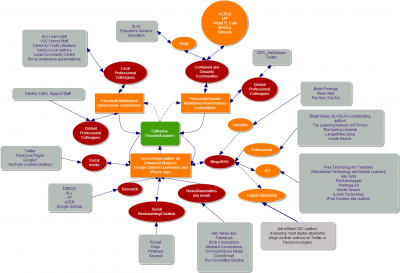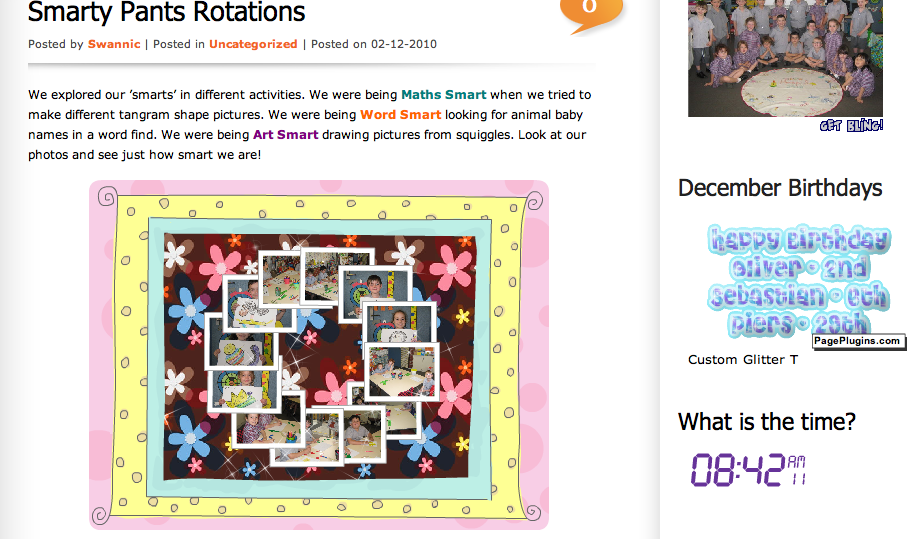In the second post in our series on advocacy in school libraries, regular Bright Ideas contributor Catherine Hainstock shares strategies for building influence with colleagues.
The degree of influence a Teacher Librarian feels they have will depend on individual circumstances, but I believe we all have more than we think.
Take a minute to make a list of all the people you have affected today through your actions and words and how you interacted. It could be as simple as the smile you gave someone in the corridor, the great link you found and sent to a teacher, or the students who are now looking forward to attending the Book Club meeting you just promoted in the newsletter (oh, and you need to include any negative influences you may have had on people too). Now make a list of the people who have influenced you today and how they did it. These lists are not just to make you feel good or bad about your day but to demonstrate the capacity and the opportunities available to influence others in the school community. Every time we come into contact with someone, we can influence them. The trick is to harness those opportunities and make them work for us and for the good of our service.
John Kotter suggests that within any organisation, it’s helpful to understand which people are important to you. These are the people we want to influence. Try drawing an Influence Map as suggested by Gary Hartzell in Building Influence for the School Librarian. It can be very enlightening!
Here’s how:
- Draw a central circle and label it with your title (Teacher Librarian)
- Place people/positions around your service and indicate how important their support is to you and your service’s success. You might want to think of them as Important, Very important, and Critical eg. the Principal would rank as Critical to Teacher Librarians – our success and existence as a service depends on their support. Think about Heads of Departments, admin staff, parents etc. and people who may not hold formal positions of power but are influential in other ways. (I’ve colour coded the diagram below)
- Now review the strength of the connection you have with each person on the map and indicate whether there is a close connection, medium, or loose connection. (I’ve used the thickness of the line to indicate the strength of connection in the diagram below).
This mapping exercise gives some sense of where to work on relationships. It’s important to focus on those people identified as critical or very important to your success but with only a weak connection.
Building connections involves connecting and communicating with those people you would like to influence. It doesn’t hurt to have a plan but even small efforts can begin to strengthen relationships:
- use a different entrance to school so you can run into those people
- pass through the staff room on the way to the library
- bump into people in car park
- go for a short walk, stop in on a class (you heard they were presenting projects!)
- attend different meetings (even if you are not invited) – tell them you’d like to know more about their department/subject/group of students. You are looking for ways to support them with resources etc.
- plan to feature different classes’ work in library or promote subjects in the library (eg. Numeracy Week, Geography Week)
- invite different departments or cohorts for morning tea in the library. Our Head of Library does this and we enjoy connecting with teachers who don’t normally get time in the library and helping us to support them better.
- keep a book to write down any resource wishes you may overhear and provide them where possible
These informal strategies are all about building connections but they also invoke the Reciprocity Principle; the belief that people should be paid back for their kind actions. Hartzell thinks reciprocity is one of our strongest tools and recommends we actively cultivate it. He offers suggestions to immediately get it working for TLs:
- offer what people need before they think to ask (eg. resources for a new assignment, PD or demonstration about some resource/tool/concept with which you are familiar, library orientation sessions for new staff)
- involve yourself in tasks critical to the success of others (and make your contributions clearly visible)
- search for problems to fix (carry out user surveys, identify emerging trends in education, become knowledgeable about them and promote)
- do the unexpected (create new traditions, draw on your individualism, be a role innovator)
- work to increase the amount of resources over which you have control so you have more to offer (eBooks, authors, volunteer readers, pathfinders)
Ultimately the more we can build our influence as Teacher Librarians, the more we embed our services into school culture and planning.
Other posts in this series:



